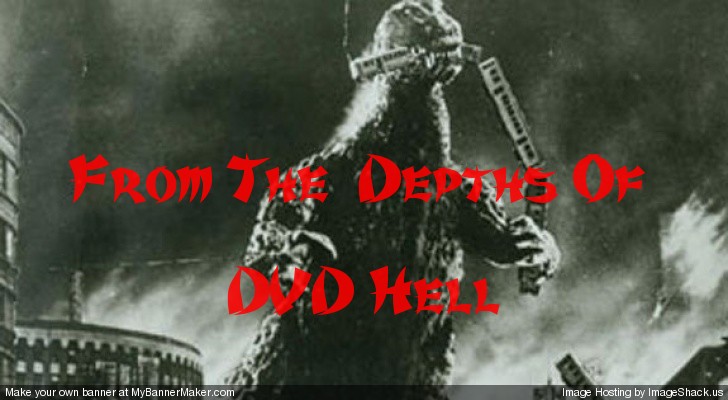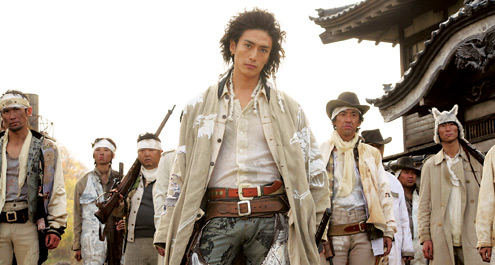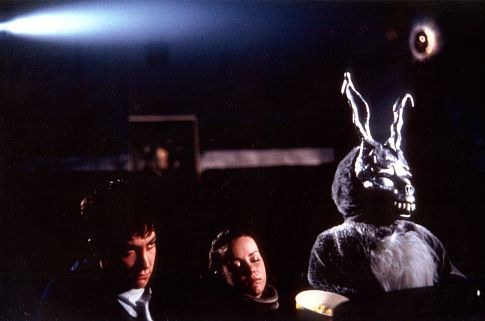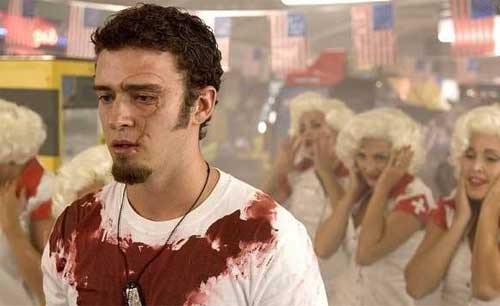Title: Sukiyaki Western Django
Director: Takashi Miike
Released: 2007
Staring: Hideaki Ito, Koichi Sato, Yusuke Iseya, Masanobu Ando, Takaaki Ishibashi, Quentin Tarantino, Sato Koichi
Plot: A Lone unnamed gunman (Ito) rides into the town of Yuta, where two rival gangs, the Genji and Heike who are currently battling for control of the town and the treasure which it hides.
Review: I have to be honest, that I was kind of intrigued to see this film. Not only due to the fact that it is a Japanese Western, an idea which hasn’t really been seen since the 60’s with films such as “The Fort of Death” but I especially didn’t want to pass on seeing one directed by Takashi Miike, who the majority of his films I have loved since I first saw “Audition” which along with “Battle Royale” and “Ringu” would spearhead the revival of interest in Asian cinema and which upon my first viewing not only left me shocked, but also keen to hunt down more of his work, which has over recent years helped him build a strong cult following, especially with western audiences and in many ways helping to lead the way for equally controversial directors such as Shinya Tsukamoto (Tetsuo: The Iron Man) and Yoshihiro Nishimura (Tokyo Gore Police) to gain their exposure to Western audiences.
“Sukiyaki Western Django” however is a rare break from Miike’s usual themes, seeing how it is not only lighter in subject matter, but has heavy leanings towards comedy, with a sense of humour that makes it easy to compare this film to the films of Stephen Chow (Shoalin Soccer) and it's genre that Miike has rarely explored, with the only film that really springs to mind being The Happiness of the Katakuris” and this certainly caught me off guard when I sat down to watch it, aswell the fact that this is also his first film, to shot completely in English.
Opening with the first of Tarantino’s two appearances in this film as Ringo, who is not only the sole western gunslinger in this movie but he’s also one with a tale to tell. Its clear not only from this opening sequence, but also from the painted backdrops (which are used to help, separate the flashbacks from the main story) and the kung fu style dialogue that this certainly by no means, going to be a western in the traditional sense. Still this slightly surreal opening is a gentle welcome to this less than traditional western, something of luxury when it comes to Miike, who is often happier throwing his audience head first into his films and allowing them to figure things out for themselves, as he bombards them with a stimulus overload of vivid imagery, which was especially the case with “Dead of Alive” which proudly still holds the title for having one of the most shocking openings committed to film, but none of this is to be found here, much like most of his usual themes, which has been so familiar with his previous work, such as extreme violence and sexual taboo’s, which is no where to be found here. True this might upset some of the fan base, the majority of which no doubt, having been first drawn to his work for these themes especially, but it certainly does this film no harm as he quickly moves from this surreal opening to the main story, with Miike wasting little time as the film bounces along at a steady pace, taking the time to introduce us to the two gangs who are very radically different with the Genji lead by the handsome and calculating Minamoto no Yoshitsune (Iseya) who operate using their own version of the samurai philosophy, which is quoted to them constantly by Yoshisune, while they choose to dress themselves in white and weld samurai swords, while their counterparts the brutal Heike lead by the ruthless Kiyomori (Koichi), whose personal philosophy for his gang is taken from Shakespeare’s “Henry VI” comparing the war of the roses to their own personal fight, especially more so, seeing how the red’s won. So convinced that this is fate, he even goes as far as changing his name to Henry. It could have been very easy to get caught up in just the activities of these two gangs, but Miike still manages to find the time to introduce the varied town residents, including the split personality sheriff (Teruyuki Kagawa) who often argues with himself in high pressure situations, providing numerous humorous moments throughout the film, much like the local tavern madam Ruriko (Momoi Kaori) who might hide more than a few secrets of her own.
Despite setting out to create a Japanese western, Miike still borrows liberally from such landmark Italian Westerns of Sergio Leone, aswell as the “Acid-Westerns” of Alejandro Jodorowsky such as “El Topo” taking the aspects he likes from each, to create his vision which style certainly comparable to Tarantino, who readily draws influence from the genres he loves, though more jaded critics would rather pass this off as plagiarism, rather than seeing it merely as a way of paying homage to the films, which paved the way and giving the film junkies another reason to get excited as they try to figure out where each inspiration was drawn from.
As I stated earlier in this review, while watching you can help but notice that it contains a similar sense of humour to the films of Stephen Chow, something that only continues to grow as the audience grows more accustomed to this bizarre story setting, but it never threatens to overpower the story turning it into a farce, with the moments of humour being added subtly through out such as Kiyomori hiding behind his more portly henchmen, once the shooting starts for their bullet stopping potential, something that is taken to another level by the time the final shootout begins and he is using a line of six of his henchmen, as his own personal shield. It does feel kind of weird seeing humour in a Miike film, especially seeing how the humour in his films, is usually as dark as his story setting, but here it never once feels forced or out of place and marks yet another step taken by Miike, much to the distain of some of his fans, towards more mainstream film making, which several of his more recent projects have seen, as he begins to tone down the same dark delights he used with just glee in his early films, for more subtle shocks and projects such as this.
As I stated earlier in this review, while watching you can help but notice that it contains a similar sense of humour to the films of Stephen Chow, something that only continues to grow as the audience grows more accustomed to this bizarre story setting, but it never threatens to overpower the story turning it into a farce, with the moments of humour being added subtly through out such as Kiyomori hiding behind his more portly henchmen, once the shooting starts for their bullet stopping potential, something that is taken to another level by the time the final shootout begins and he is using a line of six of his henchmen, as his own personal shield. It does feel kind of weird seeing humour in a Miike film, especially seeing how the humour in his films, is usually as dark as his story setting, but here it never once feels forced or out of place and marks yet another step taken by Miike, much to the distain of some of his fans, towards more mainstream film making, which several of his more recent projects have seen, as he begins to tone down the same dark delights he used with just glee in his early films, for more subtle shocks and projects such as this.

"Sukiyaki Western Django" won’t be for everyone especially, those viewers who choose to bitch over the spoken English, which the standard it’s spoken at tends to vary between actors, but seeing how the majority of the actors can’t speak English anyway, it’s kind of a point quibble and it’s still a hundred times better than some of the hack dubbing jobs, which continue to plague translations. Still language issues aside it remains a fun and entertaining film, which never verges on taking itself too seriously, while also being highly accessible for non western fans such as myself.
It’s strange; it’s weird but defiantly worth at least the price of rental and provides a gentle introduction, to the work of probably one of the most exciting directors, currently working in Asian cinema at present.
























No comments:
Post a Comment